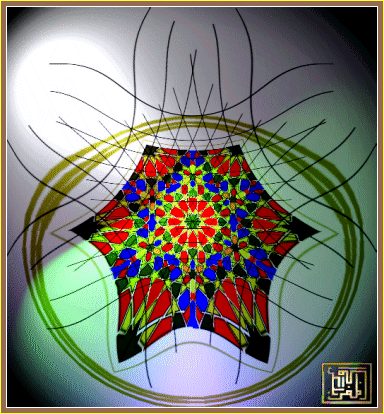allahallahIbn Sina was also a poet and a philosopher, and he formulated a conception of the world which ties in nicely with our discussion of higher dimensions. Ibn Sina thought that all of existence began with a single point. This point is the divine source and center, the point of pure divinity, the source of all life, heat, and movement. Creation emanates out from this point in concentric circles, with all objects lying either closer or farther from the center point. Objects which are close to the source are "hot and moist" while objects farther out are "cold and dry." This classification of matter is inherited from the ancient conception that there are four elements which make up physical creation, and which give matter its properties: earth (cold), wind (dry), fire (hot), and water (moist). Within this cosmology, living creatures are mostly hot and moist, and close to the center. Something like a rock, which does not move on its own, breathe, or maintain heat, is mostly cold and dry, and thus far from the center. Thus distance from the center point forms a dimension of reality which is beyond simple 3-D. For example, I can hold a rock in my hand. I am hot, moist, and living; close to the center which instills me with these properties. The rock, which I hold in my hand, is far from the center, thus cold, dry, and life-less. Although we are right beside each other in 3-space, we are quite separate from each other in the 4th dimension of proximity to the divine source.

From http://www.bangor.ac.uk/~mas009/islampat.htm
allahallahIbn Sina also explained the life of a person using 4-D. He described a person in the following way, which is the same way that Edwin A. Abbott described dimensionality in his timeless work Flatland: When a point moves, it becomes a line. When a line moves, it becomes a flat square. When a square moves, it becomes a cube. When the cube moves (which in modern terms is called a hypercube), a 4th dimension of movement has been introduced. According to Ibn Sina, this last level of dimension describes human life. Beyond being a 3 dimensional object (like a rock), a human has a fourth level of movement: the spark of life and internal movement which emanates from the source. After the fourth movement, of 3-D to 4-D, the object collapses back into a point again, back to the source. After death, we return to that point where all movement began, the point from which divinity emanates. But let's postpone death long enough to view the final page.